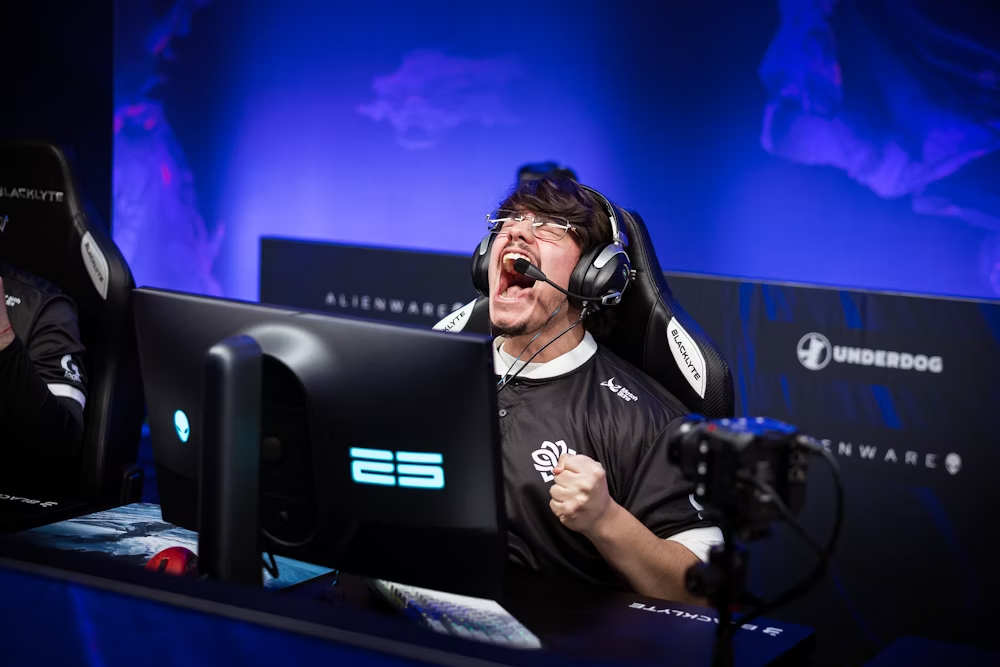In the second stage of the 2025 BLAST CS2 Austin Major, a game attracted widespread attention in the industry: the South American team Legacy defeated FaZe Clan, which ranks in the top five in global power, 2-0. Although this victory was defined as an “upset”, what it reflects is the deep reconstruction of the CS2 regional pattern.
Legacy’s advancement is not only the success of a team, but also a sign of the maturity of the entire South American CS system. This victory makes people re-examine the future possibilities of CS2 outside of the traditional European and American hegemony.
South American teams have entered the core of the main stage for the first time
Throughout the history of CS:GO to CS2, Europe and the CIS have always been the dominant forces. In the CS:GO era, Major events Stage 3 were often monopolized by top Western and Eastern European teams such as G2, Vitality, NaVi, and FaZe. South American teams often stopped in the qualifiers and played the role of spoilers at most.
The significance of Legacy’s promotion is that they broke this “ceiling“:
They are the only non-European and American team that started from Stage 1 and successfully advanced to Stage 3.
The opponent they defeated, FaZe, is currently one of the top 5 teams in the world, with a lineup including superstars such as frozen, ropz, and s1mple.
This is the first time that a South American team has entered the “core stage” – Stage 3 in the CS2 Major system and played against the world’s top teams.
This is no longer a casual performance of a certain player, but a concentrated reflection of regional strength.
Legacy’s stable victory is not accidental
Legacy’s 2-0 victory over FaZe this time was not a fluke, but a multi-dimensional suppression of the opponent. The following is a comparison of key data:
| Metric | Legacy (Team Average) | FaZe (Team Average) |
| ADR (Average Damage per Round) | 83.4 | 72.1 |
| KAST (% of rounds with Kill, Assist, Survived, or Traded) | 75% | 66% |
| Opening Kill Ratio | 58% | 42% |
| Player Rating 2.0 | 1.10+ (Consistent across roster) | All below 1.0 except frozen |
Not only lux and dumau have stable output, but the team’s space control and rhythm control are obviously better than the experienced FaZe. During the game, Legacy completed a comeback in the Eco game many times, reflecting its tactical flexibility and psychological resilience.
Behind-the-scenes driving force:
Legacy’s success is not accidental. Behind it is the evolution of the South American system and the maturity of the team training mechanism:
1. Talent flow and training league upgrade
In recent years, major clubs in South America have successively established local training systems, such as Brazil’s CBCS and FURIA Camp in the ARG region. Most of Legacy’s players come from the local training system, representing a “internal blood-making” team model.
2. Coach and tactical support introduce European model
The Legacy coaching team refers to the logistics and play of Vitality and G2, strengthens the systematic training methods such as demo review, map pool customization, and psychological management, so that the team can be more calm when facing strong enemies.
3. The generational change of players is smooth
Unlike most European and American teams that rely on veterans, the average age of Legacy is only 21 years old, and there is no veteran who entered the world’s top 10 during the CS:GO period. Fresh blood, agile reaction and team tacit understanding have become the magic weapon for winning.

FaZe’s problems are exposed
This defeat also highlights FaZe’s problems. Since the introduction of s1mple, although FaZe seems to be stronger in individual firepower, its tactical coordination, map adaptation and team resource allocation have been criticized.
The overlap rate between s1mple, ropz and broky on the defensive end is high, which frequently causes “resource congestion”.
The map selection is conservative and fails to adapt to Legacy’s high-mobility play.
Lack of “switching hands”: facing the opponent’s high-frequency mid-lane breakthroughs and turning points, lack of timely tactical response.
This defeat may force FaZe to reconsider whether to build a team around stars or build a more functional lineup system.
Future Outlook
The success of Legacy brings a deeper question: Is CS2 ushering in the era of “multi-regional combat power resonance”? In 2025, we will see more than just Legacy:
TheMongolZ in Southeast Asia successfully eliminated OG in RMR
The Falcons in the Middle East have soared in strength after reorganization and have challenged G2 several times
Although North American Liquid has a poor record, the new lineup still has room for improvement
The traditional European-centered CS2 pattern is gradually being shaken by more “sub-regions”. This not only makes the game more uncertain, but also provides more stages and possibilities for global teams.
Conclusion: Legacy is the beginning, not the end
Legacy’s victory over FaZe is not just a victory, but a signal: the future of CS2 will belong to those teams that dare to break through traditions and reshape the system.
Behind this game, South American CS has completed the transformation from a “wild card” to a “challenger”. In the next Stage 3, we will see whether Legacy has the ability to become a “regular strong team” – truly transforming from a dark horse to a benchmark. For more event information and CS2 cases, please click Gocsgo blog or Gocsgo.

